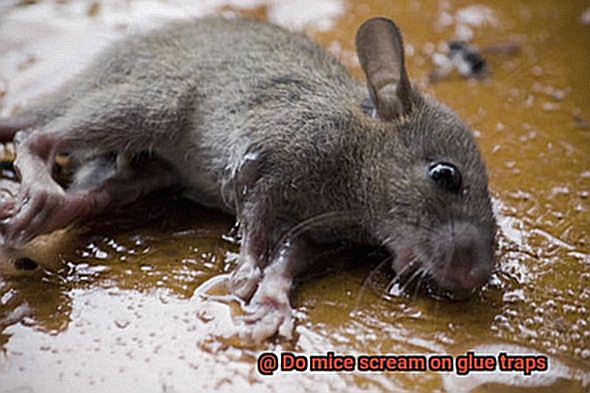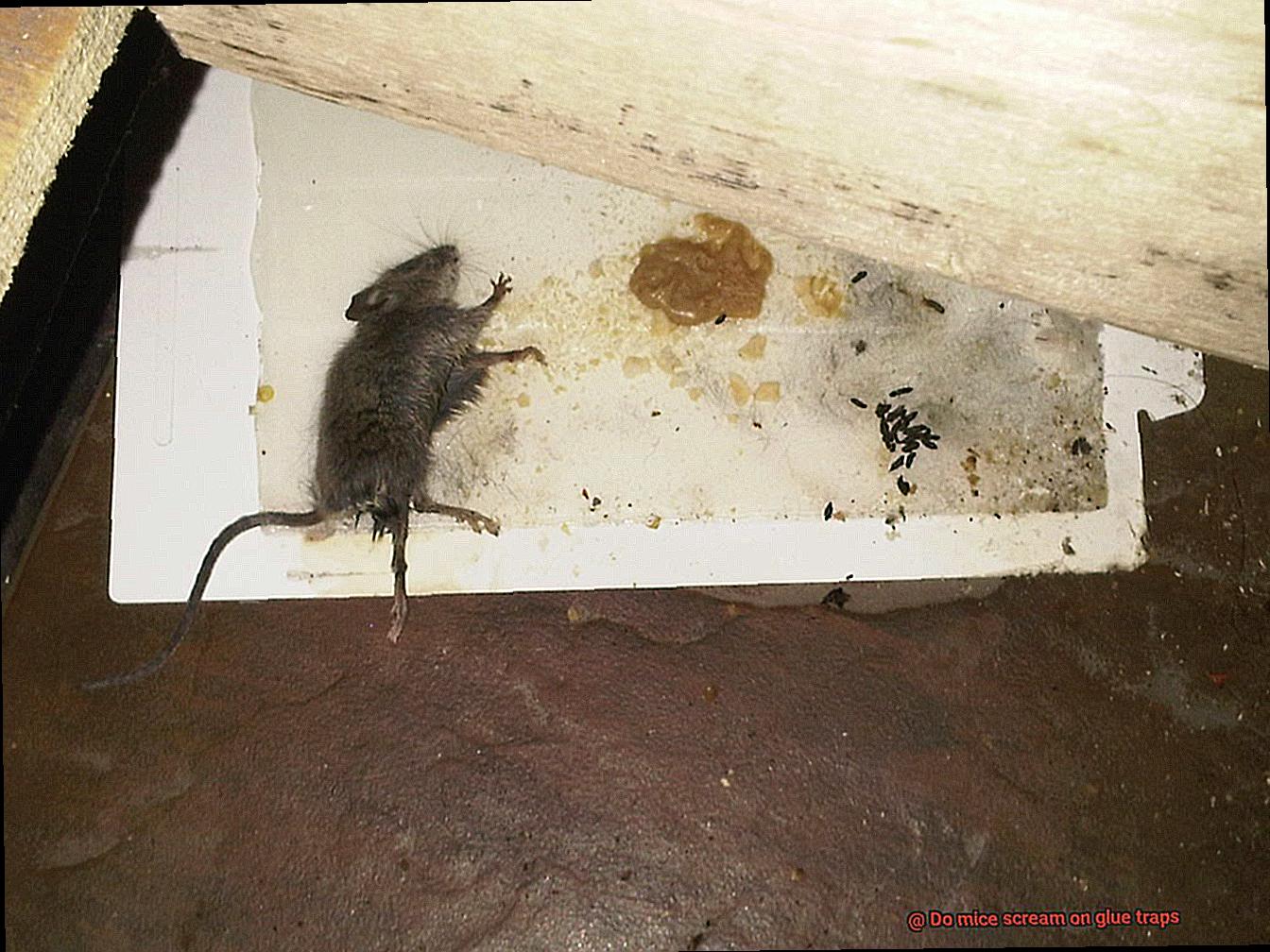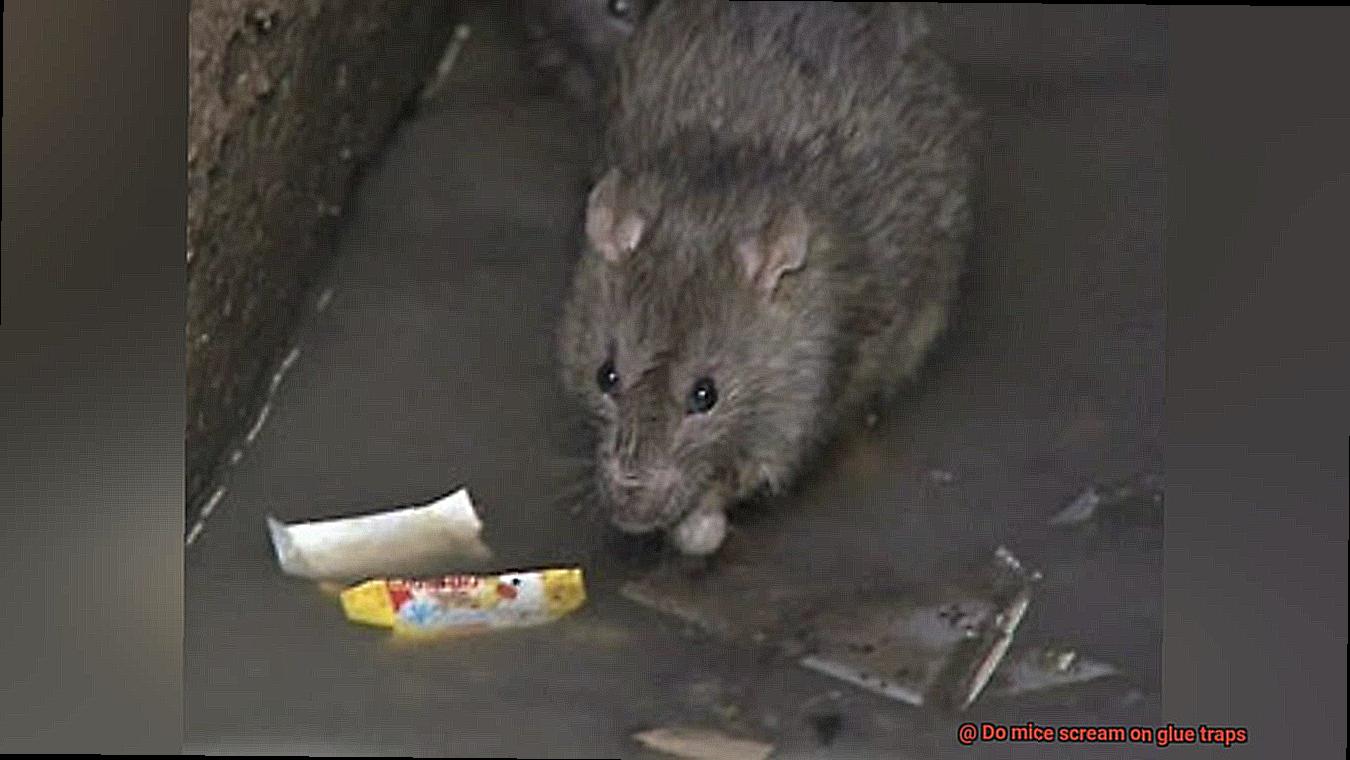Imagine this: you spot a sneaky little mouse darting across your kitchen floor, sending you into full-on panic mode. Desperate to put an end to this furry invasion, you set up some trusty glue traps, hoping they’ll catch those pesky intruders once and for all. But here’s the burning question: do mice really scream when they get stuck in these sticky situations?
In this blog post, we’re diving deep into the world of glue traps to uncover the truth about their impact on mice. We’ll separate fact from fiction, bust some common myths, and explore the ethical side of using these controversial contraptions. So if you’re curious about what happens to these tiny creatures and want to make an informed choice when dealing with a mouse problem, stick around (pun intended.) as we reveal the real deal about mice and glue traps.
What are Glue Traps?
Contents
In the realm of pest control, one method that ignites both fascination and controversy is the use of glue traps. These adhesive devices have gained popularity in capturing small animals, insects, and rodents, but their ethical implications remain a subject of debate.
Join us as we unravel the sticky world of glue traps, exploring their uses, effectiveness, and the ongoing discussion surrounding their humane nature.
Glue traps, also known as sticky traps or adhesive traps, are flat surfaces coated with a powerful adhesive substance. Crafted from cardboard or plastic, these versatile traps come in various shapes and sizes, tailored to specific pest control needs.
Uses and Effectiveness:
Glue traps prove indispensable in capturing mice, rats, cockroaches, spiders, and other unwelcome pests. Position them along walls, in corners, or wherever pests frequently roam. Once an animal steps onto the trap, its body or feet become ensnared by the adhesive surface. Escape becomes impossible. Offering a chemical-free solution, glue traps effectively capture pests without causing further harm.
Ethical Considerations:
While glue traps present themselves as a humane alternative to traditional methods since they don’t instantly kill animals upon capture, ethical concerns persist. Trapped animals may endure distress and suffer for an extended period before being released or disposed of. Careful handling is crucial to minimize accidental contact with the adhesive.
Reducing Discomfort:
Some glue traps feature covers or tunnel-like structures that provide a semblance of security for trapped animals. This design aims to alleviate stress and anxiety while awaiting release or disposal. Regrettably, not all glue traps possess this feature, potentially heightening fear and discomfort for captured creatures.
Do Mice Scream on Glue Traps?
In this article, we will delve into this controversial topic, exploring the reasons behind these alleged vocalizations. Prepare to unravel the truth about mice and glue traps.
The Mouse’s Plight:
When a mouse unwittingly steps onto a sticky trap, fear and distress quickly take hold. Unable to move freely, it frantically struggles to escape, inadvertently creating squeaking or rustling sounds that may be mistaken for screams. However, it is important to note that mice do not possess vocal cords like humans, limiting their ability to intentionally produce sounds of distress.
Communication Methods:
Mice are adept communicators, but they rely on other means to express themselves. Ultrasonic vocalizations, body language, and scent marking are their primary methods of communication. Therefore, while a trapped mouse may emit sounds resembling screams, these vocalizations are involuntary and serve as a self-defense mechanism.
The Controversy Surrounding Glue Traps:
Glue traps themselves are a subject of heated debate in animal welfare circles. Experts argue that these traps cause significant stress and suffering for captured animals, deeming them inhumane due to the prolonged struggle and pain experienced by the trapped creatures. Consequently, many individuals advocate for alternative and more compassionate methods of rodent control.
Humane Alternatives:
To minimize the distress caused by glue traps, it is advisable to explore humane alternatives for managing rodent infestations.
Consider the following options:
- Seal off entry points: Prevent mice from entering your premises by sealing cracks or gaps in walls, floors, and doors.
- Eliminate food sources: Keep your surroundings clean and tidy, removing any food debris that may attract mice.
- Live traps: Utilize live traps that allow for the safe capture and release of mice outside your property. These traps provide a kinder approach to rodent control.
Vocalizations of Trapped Mice
Prepare to unravel the secrets behind these vocalizations. This article delves into the various vocal expressions of distressed mice, shedding light on their purpose and significance.
The Nature of Vocalizations:
When a mouse finds itself immobilized on a glue trap, it experiences natural distress. These vocalizations serve as their means of communication and expression of discomfort. It is crucial to note that the intensity and duration of these vocalizations may vary, but they do not necessarily indicate pain or suffering.
Squeaks and Ultrasonic Vocalizations:
The most common vocalization trapped mice emit is a series of high-pitched squeaks. These alarming sounds resemble screams or cries for help, but it’s important to remember that mice lack vocal cords, making true screams impossible. Instead, these squeaks act as distress signals.
Furthermore, studies have revealed that trapped mice may also emit ultrasonic vocalizations beyond human hearing range. These ultrasounds serve as distress calls, alerting other mice nearby to potential danger.
Individual Differences:
Not all trapped mice will vocalize. Some may remain silent, freeze in place, or employ various escape strategies. This highlights the fact that each mouse has a unique response to stress and discomfort.
Handling with Care:
The vocalizations of trapped mice can evoke emotional responses in humans due to their resemblance to human screams or cries. Individuals using glue traps must be aware of these vocalizations and approach the situation with compassion and care.
Why Do Mice Make High-Pitched Sounds?
Mice, those tiny creatures that scurry around our homes, are known for their high-pitched sounds that can range from cute squeaks to piercing screams. But have you ever wondered why they make these sounds? Today, we’re going to delve into the fascinating world of mice vocalizations and explore the reasons behind their distinctive high-pitched calls.
Communication is Key:
Mice are highly social animals, and just like us humans, they need to communicate. Their high-pitched sounds serve as a means of conveying important messages to their fellow mice. Whether it’s an alarm call to warn of danger or a mating call to attract a potential partner, these vocalizations play a crucial role in their social interactions.
Squeaks of Alarm:
Imagine you’re a mouse, and suddenly, you sense danger nearby. What do you do? Well, mice emit high-pitched squeaks as an alarm signal to alert others in their community. These warning calls help coordinate group defense mechanisms and ensure the safety of the entire mouse clan.
Distress Calls for Help:
Mice aren’t just communicating with each other; they also know how to grab our attention. When trapped or in discomfort, mice emit loud, piercing squeaks that can tug at our heartstrings. These distress calls serve as a plea for assistance, urging us to rescue them from their predicament.
Love is in the Air:
Ah, courtship and romance. Male mice use ultrasonic vocalizations at frequencies beyond our hearing capabilities to woo their potential mates. These secret love songs help them establish dominance over other males and attract female partners.
Expressing Pain and Discomfort:
Mice may be small, but they experience pain too. When injured or in distress, they emit prolonged and continuous high-pitched squeaks as a response to their physical condition. These sounds serve as a way for them to express their pain and seek comfort.
The Suffering of Trapped Mice
In our previous section, we explored the fascinating world of mice vocalizations. Today, we embark on a thought-provoking journey into the ethical implications of glue traps and the immense suffering trapped mice endure. Brace yourselves for a heart-wrenching exploration of these seemingly innocuous devices.
The Sticky Situation:
Glue traps, innocently designed to immobilize mice with strong adhesive, conceal a darker truth. What may seem harmless becomes a nightmare for the unfortunate mice that become ensnared. As they come into contact with the glue, their struggle to break free begins.
A Vicious Cycle:
The strength of the adhesive renders escape nearly impossible for these helpless creatures. Their fur, skin, and limbs become entangled in the glue as they desperately fight for freedom. The distress and pain they experience are immeasurable. In their desperation, some resort to self-mutilation, biting off their own limbs in an attempt to escape, resulting in severe and irreversible injuries.
The Sound of Suffering:
Imagine this heart-wrenching scene – trapped mice emitting high-pitched vocalizations or squeals. To our ears, these distressing sounds resemble screams of pain and fear. We must understand that these vocalizations are not mere noise; they are desperate cries for help from creatures caught in a nightmarish trap.
The Ethical Dilemma:

The suffering endured by trapped mice raises profound ethical concerns regarding the use of glue traps. Is it morally justifiable to subject these sentient beings to such extreme distress? As compassionate individuals, we must confront their cries and acknowledge the immense suffering they endure.
Alternatives to Glue Traps
Imagine a helpless mouse, ensnared in the sticky clutches of a glue trap, desperately struggling for freedom. As experts in ethical pest control, we firmly believe that there are kinder and more effective ways to address mouse infestations.
Here, we will explore a range of alternatives to glue traps that not only prioritize the well-being of these small creatures but also provide effective solutions to your pest problem.
Swift Snap Traps:
Snap traps have stood the test of time as a humane and efficient method for dispatching mice. Designed to deliver instant death, they spare the mouse from prolonged suffering. Place these traps strategically along known mouse pathways to maximize their effectiveness.
Electric Mouse Traps:
For those seeking a hands-off approach, electric mouse traps are an excellent option. These traps administer a quick and painless electric shock, instantly dispatching the mouse. Easy to set up and reusable, they offer a reliable solution to your infestation woes.
Gentle Live Catch Traps:
If your preference lies in capturing mice unharmed, consider using live catch traps. These traps safely trap mice alive, allowing you to release them unscathed outside your home. Remember to release them at least 100 yards away to prevent their return.
Unbearable Ultrasonic Pest Repellents:
Harnessing the power of sound, ultrasonic pest repellents emit high-frequency noises that mice find intolerable. These devices are safe for humans and pets while effectively driving away unwanted visitors.

Seal Entry Points:
Prevention is always better than cure. Discourage mice from entering your home by sealing up potential entry points. This includes addressing cracks in walls, doors, and windows, as well as blocking openings in the foundation or roof.
Impeccable Cleanliness:
Mice are drawn to food sources, so maintaining a clean and tidy home is vital in deterring them. Store food in airtight containers, promptly clean up spills and crumbs, and dispose of garbage in sealed bins.
Natural Repellents:
Consider utilizing natural repellents such as peppermint oil or mothballs. These substances emit strong odors that mice find repugnant, effectively keeping them at bay.
Expert Pest Control Services:
If your mouse infestation seems overwhelming, seek the assistance of professional pest control services. These experts possess the knowledge, tools, and humane methods necessary to safely remove mice from your home.
Ethical Concerns with Glue Traps
Glue traps, commonly used to catch mice and other small pests, may seem like a convenient solution for pest control. However, the ethical concerns associated with these sticky devices cannot be ignored. The suffering inflicted on trapped animals is heart-wrenching and raises serious questions about the morality of using glue traps.
Imagine being stuck in a glue trap, unable to escape. The glue on these traps is extremely sticky and can hold the mice firmly in place, causing immense distress and pain. As the mouse struggles to free itself, it may rip off its fur, skin, or even break its bones in the process. The sound of their high-pitched squeals of agony can be truly heartbreaking.
But the cruelty doesn’t end there. Once trapped, a mouse can continue to struggle for hours or even days until it eventually dies from exhaustion, dehydration, or starvation. This slow and painful death is inhumane and raises serious ethical concerns. No living creature deserves to endure such prolonged agony, regardless of its status as a pest.
The suffering caused by glue traps is unnecessary and cruel, especially when there are alternative humane methods available for pest control. Swift snap traps deliver instant death, providing a quicker and more humane solution. Electric mouse traps administer a painless shock that effectively eliminates pests without causing unnecessary suffering.
Gentle live catch traps allow for unharmed capture and release, providing an ethical option for dealing with mice infestations. These traps offer a compassionate approach by allowing mice to be safely captured and released back into their natural habitat.
In addition to these alternative methods, ultrasonic pest repellents can also be used to deter mice without causing any harm or suffering. Sealing entry points and maintaining cleanliness can go a long way in preventing mouse infestations in the first place.
As advocates for animal rights, we must consider the moral implications of our actions towards all living creatures. Using glue traps for pest control may seem convenient, but the suffering they cause is unnecessary and cruel. It is time to reconsider our approach to pest control and opt for more humane methods that prioritize the well-being of all living creatures.
9-Xu8PNvkKA” >
Conclusion
In conclusion, the truth about mice and glue traps is a complex and controversial one. While it’s true that trapped mice can emit high-pitched vocalizations that may sound like screams, it’s crucial to recognize that these sounds are not intentional cries of pain or suffering. Unlike humans, mice lack vocal cords, which limits their ability to deliberately scream.
However, we cannot ignore the distress and fear experienced by trapped mice. Glue traps inflict significant stress and suffering on these small creatures, leading to self-mutilation and prolonged struggle. The ethical implications of using glue traps ignite heated debates in animal welfare circles.
Thankfully, there are humane alternatives available for managing mouse infestations. Swift snap traps deliver instant death, minimizing suffering. Electric mouse traps provide a painless solution that effectively eliminates pests. Gentle live catch traps allow for safe capture and release outside the property. Ultrasonic pest repellents offer a chemical-free approach to repelling mice.
Sealing entry points, maintaining cleanliness, and utilizing natural repellents are also effective methods for preventing mouse infestations without causing harm or distress.
As compassionate individuals, we bear the responsibility of considering the well-being of all living creatures when addressing pest control issues. By choosing more humane methods, we can ensure that mice are treated with respect and compassion while effectively managing infestations in our homes or properties.






